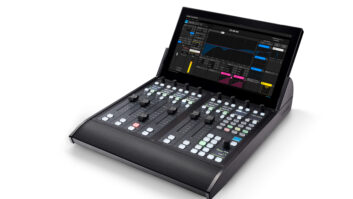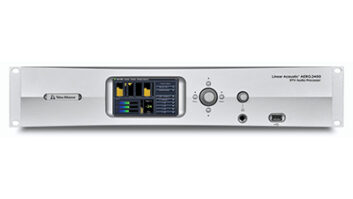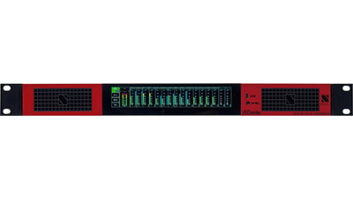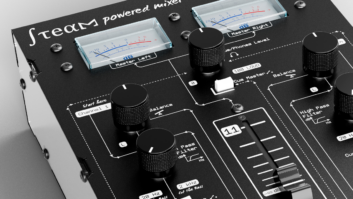Glensound has developed a dedicated professional interface for the esports market, removing the need for three separate products to generate all the required mixes for gamers, coaches, referees, and commentators.
The GTM includes a simple to use panel with three level mixes, allowing players to control their own audio mix, while headsets and headphones plug directly into the panel to deliver game audio, team comms and the player’s own voice.
The device is fully remote controllable and configurable by tournament engineers and allows the game source audio to be picked up from multiple sources (SPDIF, USB, network, analogue etc.) depending on the tournament format. It supports multi-channel mixing pre-configurable inputs from Glensound’s Dante platform or de-embedded audio from an SDI connection.
“Over the last two or three years we’ve been involved in several esports competitions, where they’ve put together the the gamer’s interfacing side using existing products,” Glensound’s managing director Marc Wilson tells TVBEurope. “They kind of do the job to a degree, but they weren’t dedicated for the job. So we came up with a device that is dedicated primarily to be the interface for the gamer themselves, but the self same box is also used by the coaches, the referees and announcers. The aim of this from the technical integrator engineering perspective, is to make the integration setup configuration of the event just easier to install and get working. There’s no complicated cabling or routing.”
Wilson adds that during previous tournaments that Glensound has worked on, the company’s intercom beltpacks were used as audio devices, with the game audio being passed on Dante, and the players using traditional headsets with a three pin mic input and a quarter inch jack plug for the headphones. “One of the key things that we’ve added that’s very unique to esports is two headphone amplifiers, so as well as traditional broadcast connectivity, which would be a three pin mic input, and a quarter inch jack for headphones, we’ve also got an eighth inch jack and mini jack,” he adds.
“The broadcast integrators are the people that provide the facilities for these tournaments generally. So it is about making their job easier because they don’t have any dedicated devices at the moment, and they’re having to use multiple channels on a sound desks for all the mics and create the the mixing separately. Plus they have to allow for generating white noise somewhere and giving that control, and they have to interconnect everything with multiple audio. This is so simple to connect. Our focus is really on the producers and integrators of the tournaments.”







